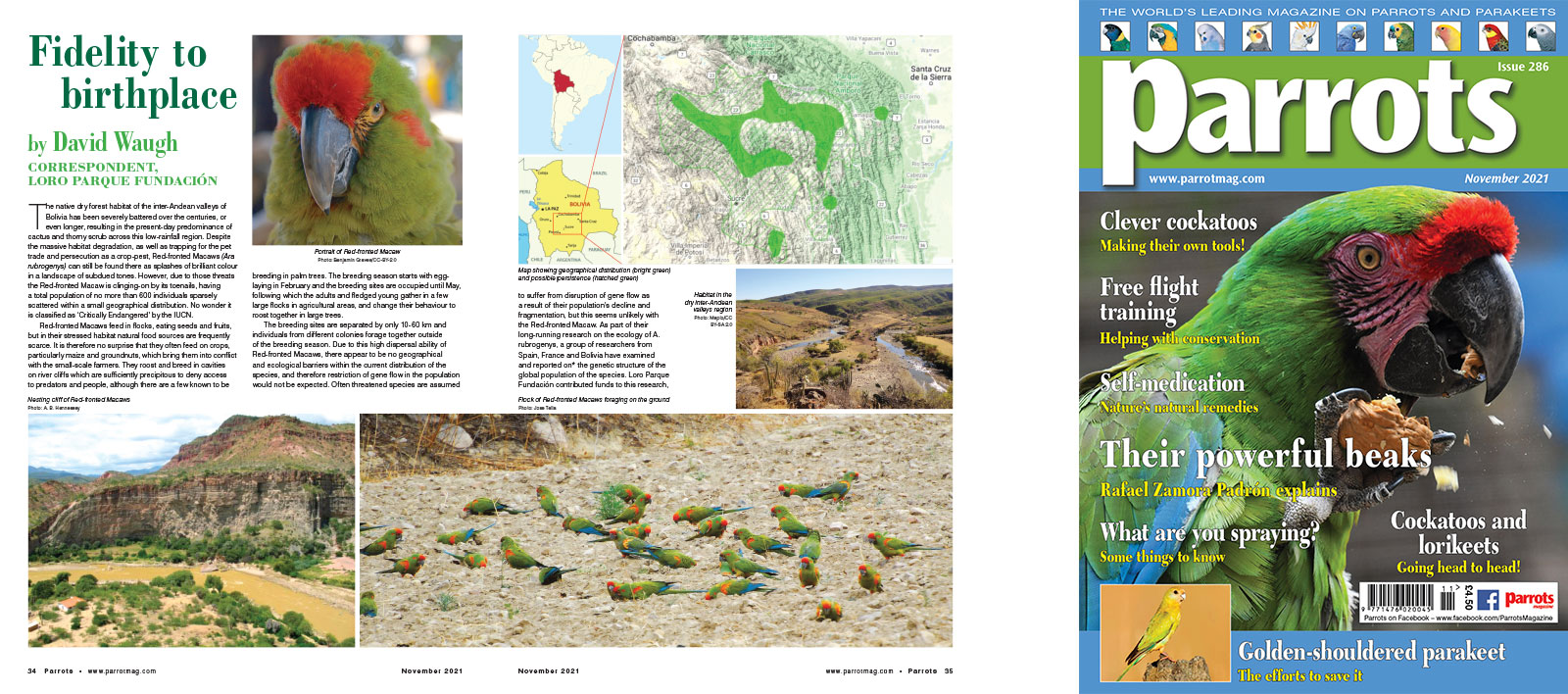
by David Waugh, Correspondent, Loro Parque Fundación
The native dry forest habitat of the inter-Andean valleys of Bolivia has been severely battered over the centuries, or even longer, resulting in the present-day predominance of cactus and thorny scrub across this low-rainfall region. Despite the massive habitat degradation, as well as trapping for the pet trade and persecution as a crop-pest, Red-fronted Macaws (Ara rubrogenys) can still be found there as splashes of brilliant colour in a landscape of subdued tones. However, due to those threats the Red-fronted Macaw is clinging-on by its toenails, having a total population of no more than 600 individuals sparsely scattered within a small geographical distribution. No wonder it is classified as ‘Critically Endangered’ by the IUCN.
Red-fronted Macaws feed in flocks, eating seeds and fruits, but in their stressed habitat natural food sources are frequently scarce. It is therefore no surprise that they often feed on crops, particularly maize and groundnuts, which bring them into conflict with the small-scale farmers. They roost and breed in cavities on river cliffs which are sufficiently precipitous to deny access to predators and people, although there are a few known to be breeding in palm trees. The breeding season starts with egg-laying in February and the breeding sites are occupied until May, following which the adults and fledged young gather in a few large flocks in agricultural areas, and change their behaviour to roost together in large trees.
